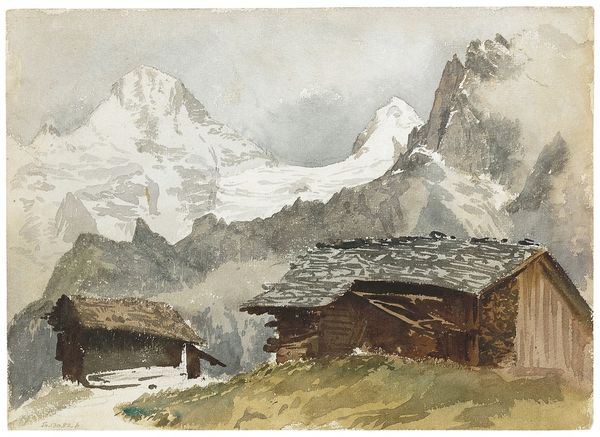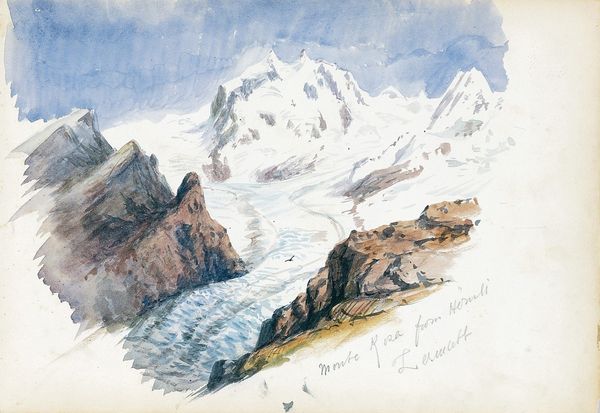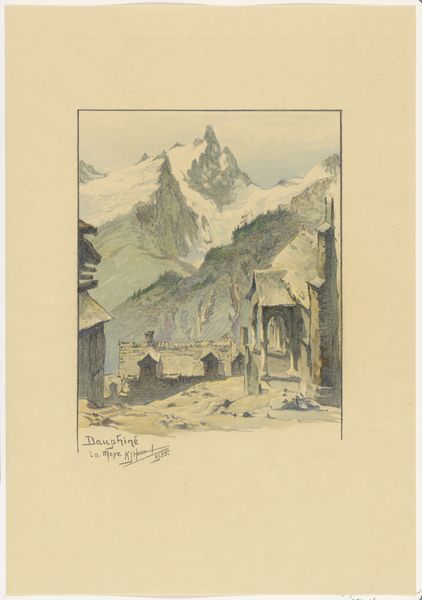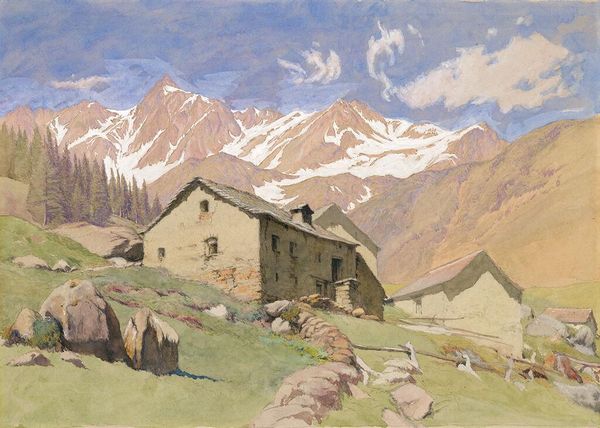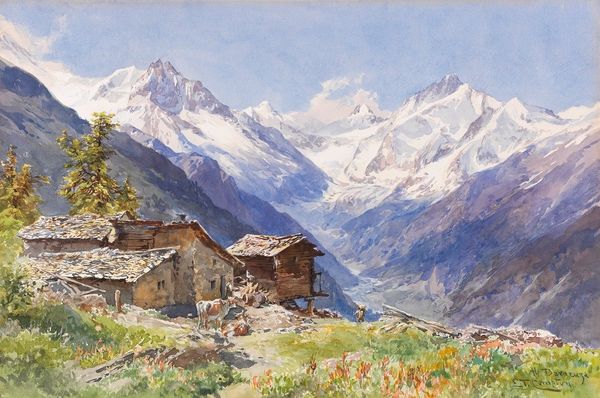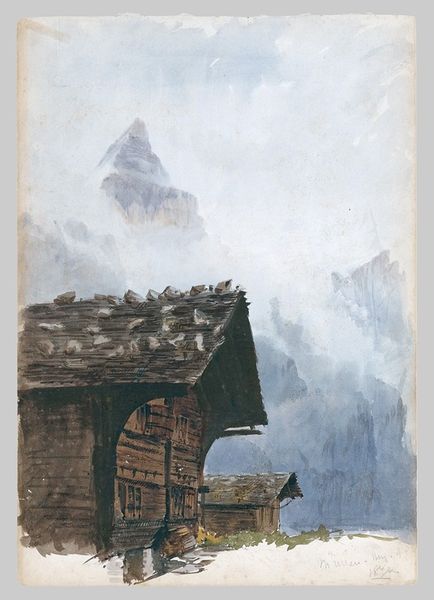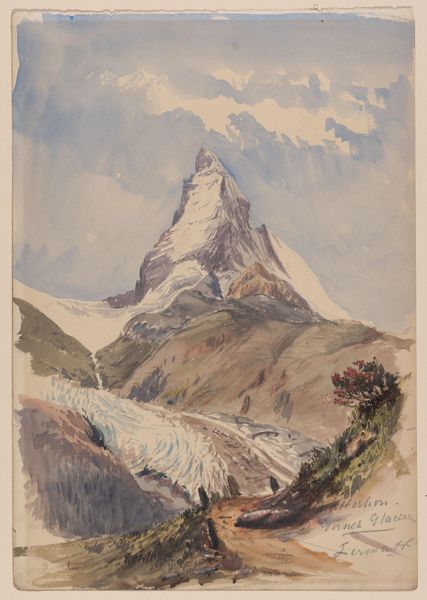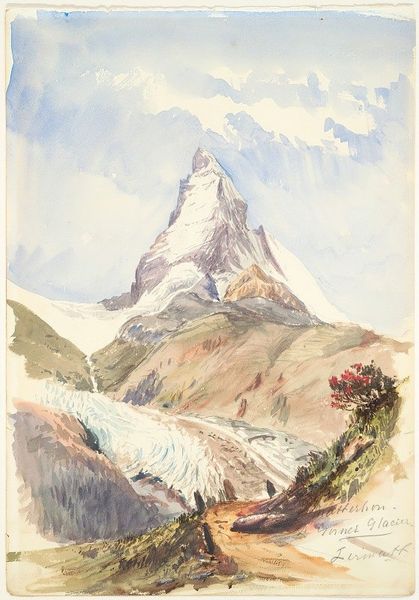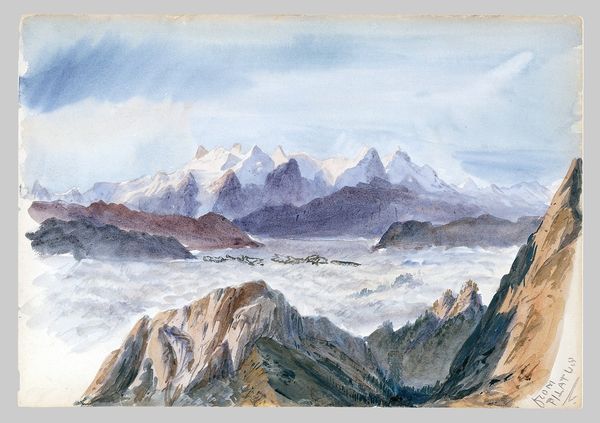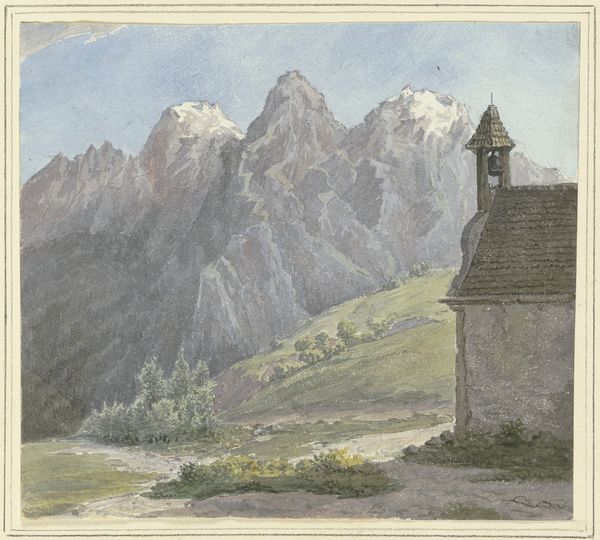
#
landscape
#
possibly oil pastel
#
handmade artwork painting
#
fluid art
#
earthy tone
#
watercolour illustration
#
mixed medium
#
botanical art
#
mixed media
#
watercolor
#
warm toned green
Copyright: Public Domain: Artvee
Curator: Here we have John Singer Sargent's "Gspaltenhorn, Mürren," created in 1870. It presents a fascinating glimpse into the Swiss Alps during a time when the area was emerging as a tourist destination. Editor: It strikes me immediately with its almost hazy quality, the way the peaks in the upper register seem to dissolve into the sky. The cabins rendered in the lower portion, they offer a contrasting groundedness. Curator: Indeed. Sargent's choice of watercolor allowed for capturing the atmospheric conditions of the high Alps with extraordinary delicacy. The landscape, previously depicted through romantic notions, was gradually being consumed through tourism. The painting stands to exemplify it. Editor: Watercolor. And yet, the textures he achieves! Look at the roughness of the cabin roofs. Those look almost hewn from shale, certainly sourced locally. One can imagine the labor that went into fitting each piece just so. I mean, just look at the mountains meeting with tourism—those things are both consuming and building those landscapes. Curator: Absolutely, that sense of place is strong. And in 1870, Switzerland saw a rise in the infrastructure development around tourism, like new railroads and hotels. This impacted not just the landscape, but local economies and ways of life. How the picturesque view actually fueled industrial pursuits is the crucial thing. Editor: That tension is so visible, I think, particularly in how those detailed cabins sit beneath that vista. It’s beautiful, but I can't help but also see it through the lens of production – the materials, the effort. Sargent captures that very tension, not only is that romantic, but it makes this about people who call this area home. Curator: It does lend itself to questions about our relationship to the land, doesn't it? And Sargent's position, too, as an American artist engaging with a changing European landscape. It provokes inquiry. Editor: Well, thinking about materials, labor, and place, this piece becomes more than just a landscape. Thank you for pointing out that additional lens to experience Sargent, because his decision to feature not just a scenic view, but also humble infrastructure complicates things. Curator: It is an aspect we should think about, indeed. The development in the landscape as Sargent may have come to learn, that, perhaps, beauty itself has production that meets the eye.
Comments
No comments
Be the first to comment and join the conversation on the ultimate creative platform.
